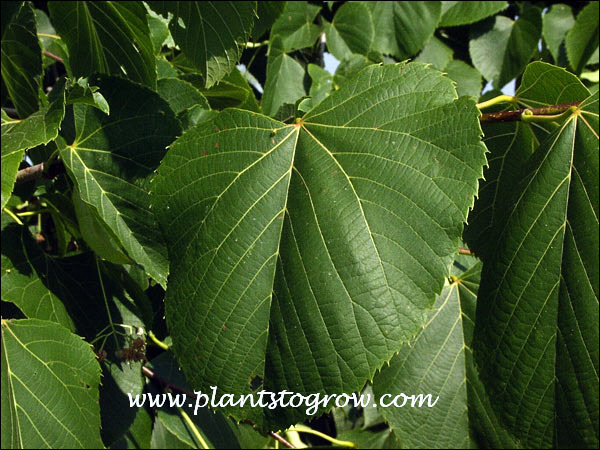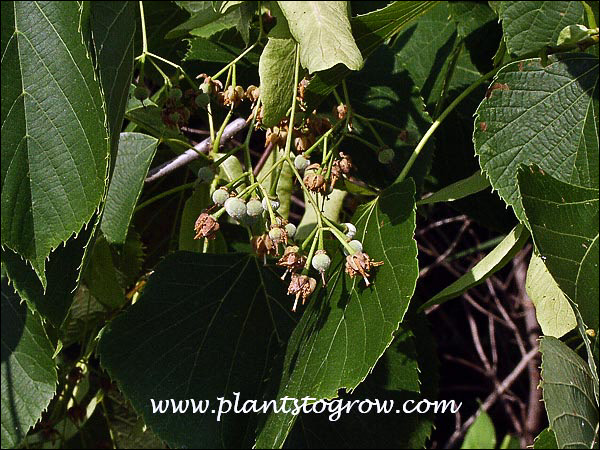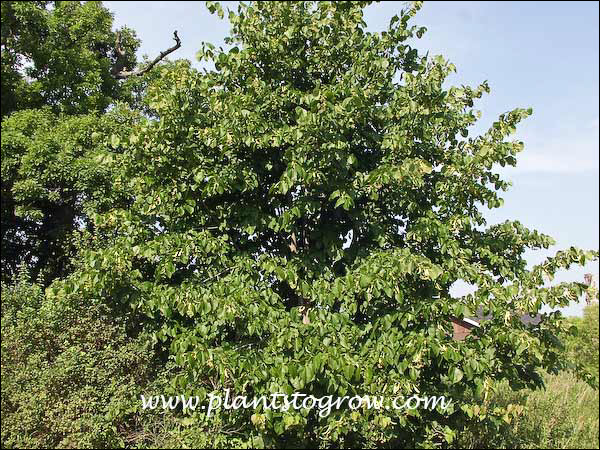| Description | A large growing native tree. |
|---|---|
| Pronunciation | (TIL-i-ah)(a-mer-i-KA-na) |
| Plant Type | All Plants, Trees Deciduous |
| Hardiness Zone | 4-8 |
| Sunlight | full, partial shade |
| Moisture | average |
| Soil & Site | prefers rich soil, tolerates average |
| Flowers | not ornamental, a good source of nectar for honey bees, honey can be purchased as "Basswood" honey |
| Fruit | nut-like fruit with temporary wings (cladodes) |
| Leaves | The simple, alternate, large heart-shaped, serrated leaves have a truncated base. Many times the leaves become disfigured in the fall from fungus. Has a yellow fall foliage color but not dependable. Many of the younger trees or suckers will have leaves considerably larger than the parent plant. |
| Stems | bark smooth gray-brown |
| Dimensions | large over 60 feet tall |
| Propagation | seeds that can be difficult to germinate |
| Native Site | Found native in low woods. |
| Misc Facts | The Linden wood is very light and is used in making crates, boxes, musical instruments, drawer sides, used for carving etc. Rope was made from the strong fibers of the bark. |
| Author's Notes | My neighbor had a Linden growing in their front yard. One thing I will always remember about this tree is how much larger the heart shaped leaves were on the suckers of the tree as compared to the normal leaves. As a kid I though they were gigantic. |
| Notes & Reference | #01-Manual of Woody Landscape Plants (Michael Dirr), #39-The Natural History of Trees (Donald Cultrose Pattie), #181-Native Trees for North America (Guy Sternberg) |

Cart



